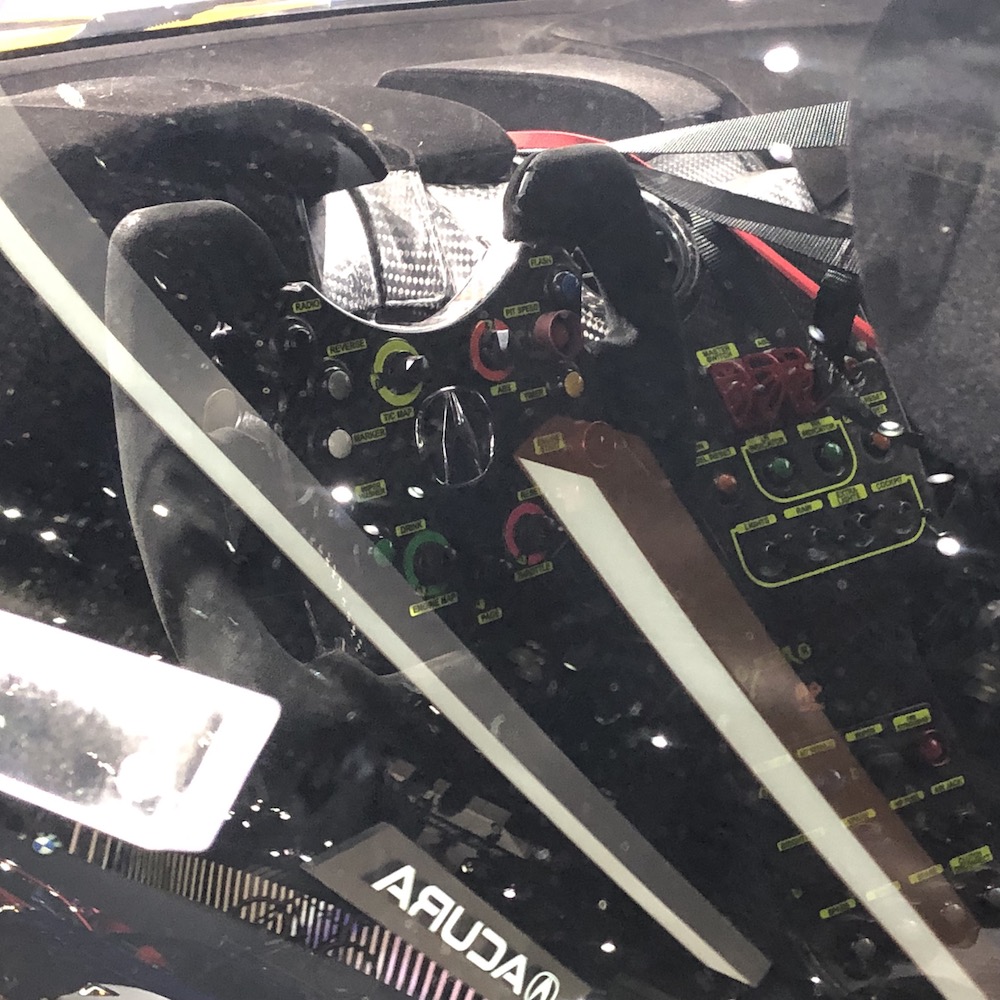NSX GT3 Evo Shows Off Acura’s Racy Side at the L.A. Auto Show

NSX race car is based on the road car, but it has less power, more aero, and it is rear-drive.
The star of the Acura display at the 2019 Los Angeles International Auto Show is the NSX GT3 Evo race car. The main objective of every major auto show is to give customers a chance to see new without the pressure of a dealership setting. Production models are the key focus, but automakers often bring concepts, future models or race cars to the show to help draw attention to their display.
This carbon fiber beauty is sort of a production model, as production begins on the American assembly line alongside the NSX road car. It isn’t street legal, but if you have $525,000 and you are looking to get into the world of GT3 racing, you can order one from Acura. However, it is just some sweet eye candy for most of the people who attend the 2019 L.A. Auto Show.

Race Car / Road Car
When you look at the Acura NSX GT3 Evo race car next to the road car, you might believe that the two are only related in name and basic form. You would be incorrect, as these two cars share a surprising number of parts. Even more surprising to some people is the fact that the road car has more power and is quicker from a stop than the world class race car.

The NSX GT3 Evo is the newest Acura race car built for the FIA GT3 category. The cars to be production-based in GT3 racing. The road car and the race car share the aluminum spaceframe. The race cars even begin their lives at the Honda American Performance Manufacturing Center in Ohio, right alongside the road cars.

NSX GT3 Evo Details
The first key difference with the GT3 Evo is the carbon fiber body. This replaces the aluminum body of the NSX road car. The race car also has more cooling ducts and more extreme aerodynamic properties, thanks to the front splitter, the rear diffuser and the rear wing.

The biggest difference between the two NSXs is the drive train. The road car’s hybrid all-wheel-drive system is not legal for GT3 racing. As a result, the race car is neither hybrid, nor all-wheel-drive. The race car is powered by a similar twin-turbo 3.5-liter V6 as the road car. Thanks to a little extra boost pressure, it makes more power than the road car’s gasoline engine alone. The road car provides 573 horsepower and 476 lb-ft of torque, with 73 horsepower coming from the electric front-drive. The race car packs 550 horsepower and 475 lb-ft of torque, all from the boosted V6 engine.

Next, the 9-speed dual-clutch transmission from the Acura NSX road car is replaced by a 6-speed sequential racing gearbox. A hand-operated clutch controls the launch, then the car shifts normally with the paddles.

Finally, the interior of the GT3 Evo race car is stripped of all unnecessary weight. This includes lightweight racing seats, communication equipment and a safety cage. The weight reduction effort to bring the GT3 Evo down to just 2,800 pounds. The road car has a curb weight of nearly 3,900 pounds.

The Acura NSX GT3 has proven to be a smashing success in the world of endurance racing, but at the 2019 L.A. Auto Show, it is doing a great job of attracting spectators to the luxury brand’s display.



Photos for Honda-Tech by Michael S. Palmer
